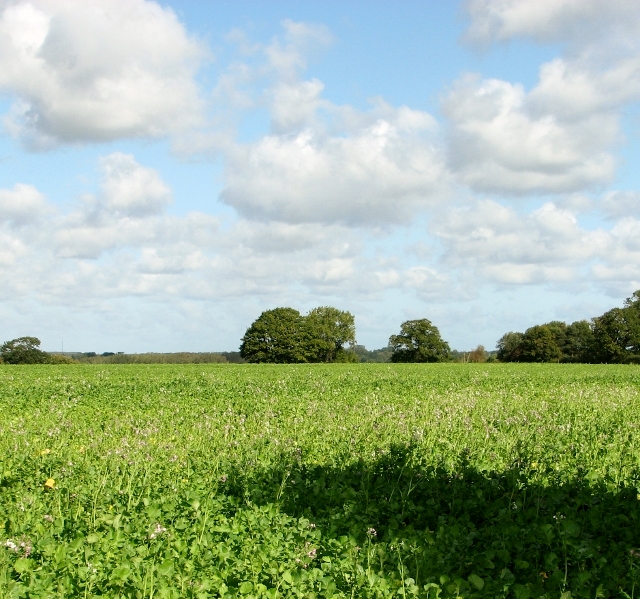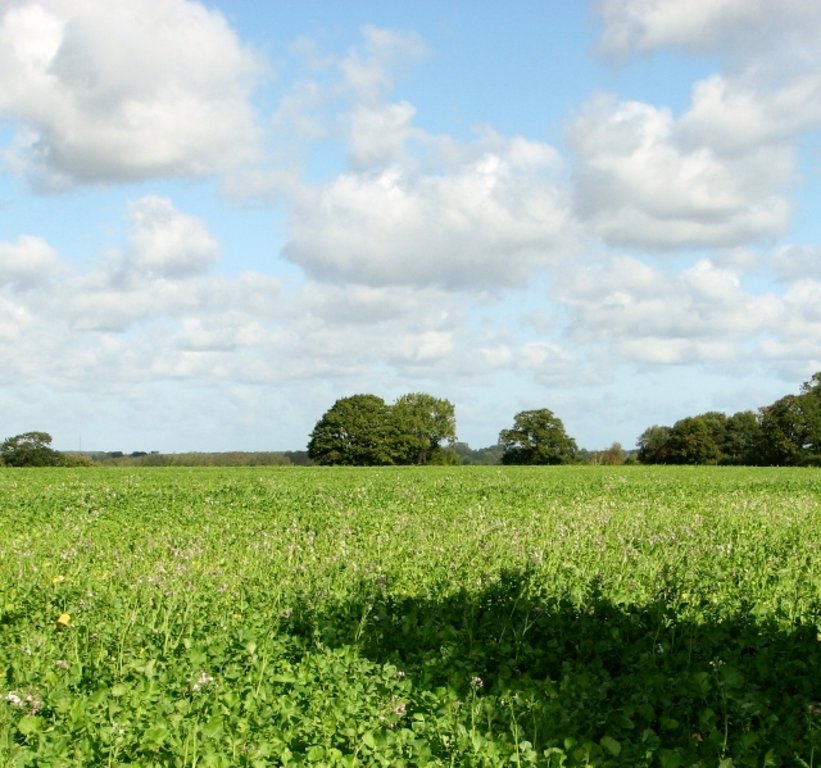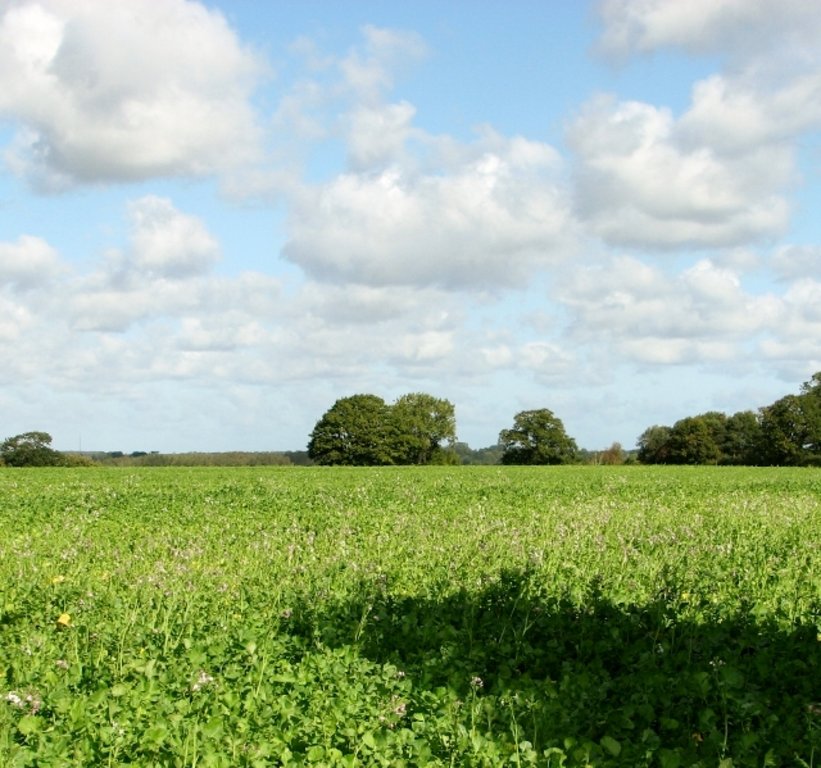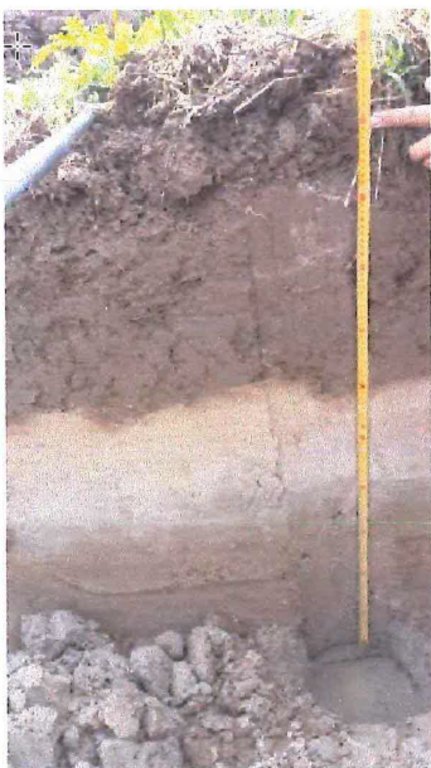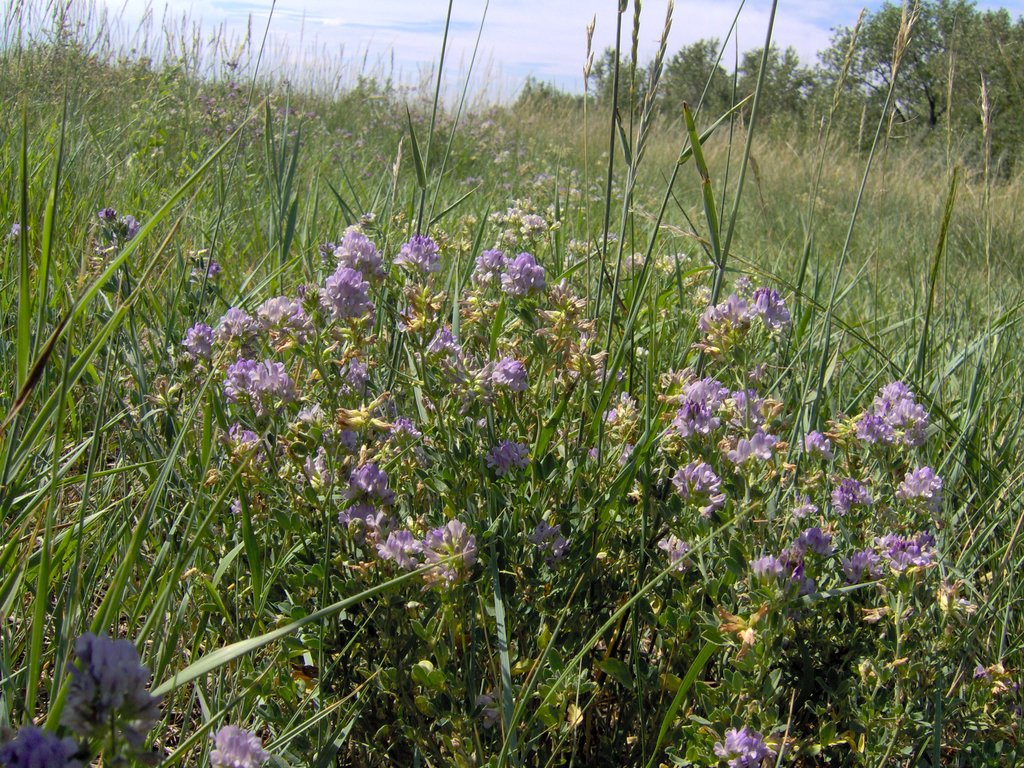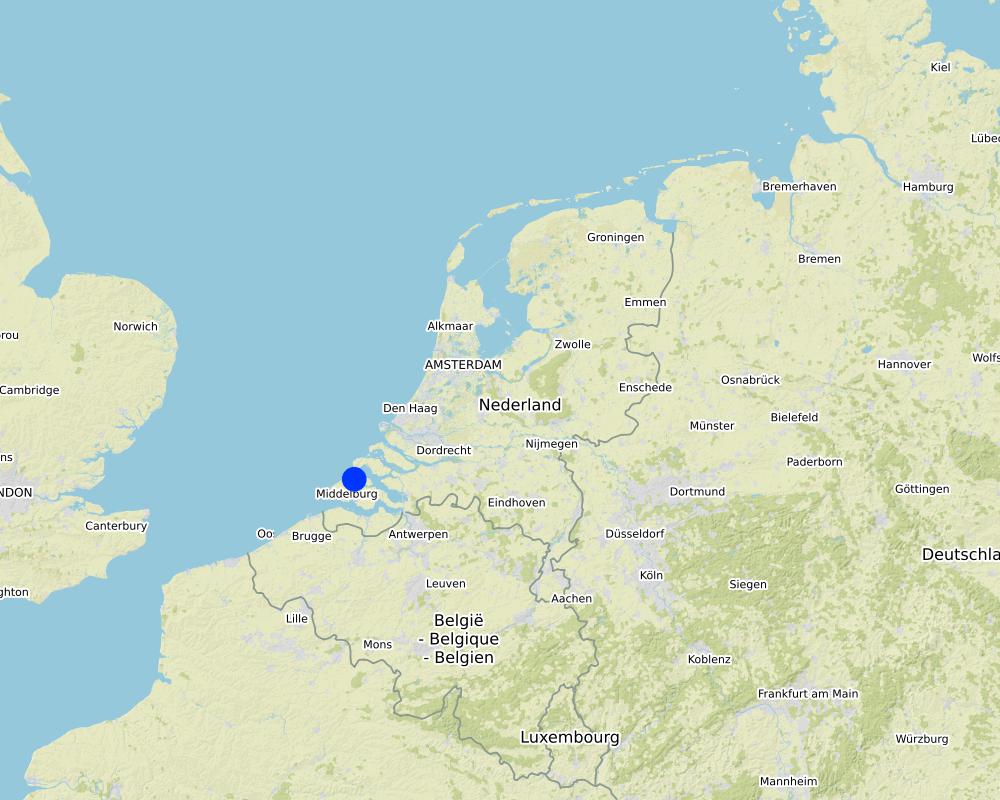Increasing organic matter content on arable land [Netherlands]
- Creation:
- Update:
- Compiler: Alan Radbourne
- Editors: David Norris, Sabine Reinsch
- Reviewers: Renate Fleiner, William Critchley, Rima Mekdaschi Studer
Bodemverbetering landbouwgrond
technologies_5380 - Netherlands
View sections
Expand all Collapse all1. General information
1.2 Contact details of resource persons and institutions involved in the assessment and documentation of the Technology
Key resource person(s)
Compiler:
Hoogendijk Tijmen
Southern Agriculture and Horticulture Organization (ZLTO)
Netherlands
land user:
Schippers Michael
Nieuw Campen VOF
Netherlands
SLM specialist:
Dieleman Wico
Southern Agriculture and Horticulture Organization (ZLTO)
Netherlands
SLM specialist:
Lavet Laura
Southern Agriculture and Horticulture Organization (ZLTO)
Netherlands
Name of project which facilitated the documentation/ evaluation of the Technology (if relevant)
European Interreg project FABulous FarmersName of the institution(s) which facilitated the documentation/ evaluation of the Technology (if relevant)
UK Centre for Ecology & Hydrology (CEH) - United KingdomName of the institution(s) which facilitated the documentation/ evaluation of the Technology (if relevant)
Zuidelijke Land en Tuinbouw Organisatie (ZLTO) - Netherlands1.3 Conditions regarding the use of data documented through WOCAT
The compiler and key resource person(s) accept the conditions regarding the use of data documented through WOCAT:
Yes
1.4 Declaration on sustainability of the described Technology
Is the Technology described here problematic with regard to land degradation, so that it cannot be declared a sustainable land management technology?
No
2. Description of the SLM Technology
2.1 Short description of the Technology
Definition of the Technology:
The organic matter content of arable land is increased by spreading mushroom compost ("champost"), growing green manure during the winter season, and reducing tillage
2.2 Detailed description of the Technology
Description:
Zeeland is the least populated area of the Netherlands. It consists of islands and peninsulas with almost half the area covered by water, but is also the largest agricultural province of the country. Significant areas are below sea level. Zeeland is known for its onion production, but also potatoes, grain legumes, sugar beet, wheat/grain and flax. The SLM technology described here, on Functional AgroBiodiversity, is applied in the North-West of the FABulous Farmers project pilot area, Zeeland.
The technology is being implemented on a 40 ha area after the harvest of the main crop in autumn. The land is fertilized with mushroom compost ("champost") a by-product of the mushroom production industry, then a cover crop is sown, which is cut and shallow tilled into the soil as a green manure in early spring.
The aim is to increase the organic matter content in the soil to support the growth of (micro-) organisms, improve the water buffering capacity and increase soil fertility. Improved soil health will support better crop growth and yields, with other inputs reduced, thus saving on costs. However, with machinery being used to spread the mushroom compost, the sowing of a green manure catchcrop, and mowing and tilling at the end of the season, the SLM technology is quite labour - and cost-intensive. This technology can be applied as a single operation, or repeated as long as the costs offset the benefits.
The compilation of this SLM is a part of the European Interreg project FABulous Farmers which aims to reduce the reliance on external inputs by encouraging the use of methods and interventions that increase the farm’s Functional AgroBiodiversity (FAB). Visit www.fabulousfarmers.eu and www.nweurope.eu/Fabulous-Farmers for more information.
2.3 Photos of the Technology
2.5 Country/ region/ locations where the Technology has been applied and which are covered by this assessment
Country:
Netherlands
Region/ State/ Province:
Zeeland
Further specification of location:
Kamperland
Specify the spread of the Technology:
- applied at specific points/ concentrated on a small area
Is/are the technology site(s) located in a permanently protected area?
No
Comments:
Parcel R804, Nieuw Campen VOF
Lat 36.921
Lon 40.2062
Map
×2.6 Date of implementation
Indicate year of implementation:
2019
2.7 Introduction of the Technology
Specify how the Technology was introduced:
- through projects/ external interventions
Comments (type of project, etc.):
Interreg North-West Europe FABulous Farmers
3. Classification of the SLM Technology
3.1 Main purpose(s) of the Technology
- improve production
- reduce, prevent, restore land degradation
3.2 Current land use type(s) where the Technology is applied
Land use mixed within the same land unit:
No

Cropland
- Annual cropping
- Brassica napus, Buckwheat, fodder radish, clover, rye
Number of growing seasons per year:
- 1
Is intercropping practiced?
No
Is crop rotation practiced?
Yes
If yes, specify:
Rotation between crops such as Brassica napus (rapeseed), Buckwheat, fodder radish, clover, rye
3.3 Has land use changed due to the implementation of the Technology?
Has land use changed due to the implementation of the Technology?
- No (Continue with question 3.4)
3.4 Water supply
Water supply for the land on which the Technology is applied:
- mixed rainfed-irrigated
3.5 SLM group to which the Technology belongs
- integrated soil fertility management
3.6 SLM measures comprising the Technology

agronomic measures
- A1: Vegetation/ soil cover
- A2: Organic matter/ soil fertility

management measures
- M2: Change of management/ intensity level
3.7 Main types of land degradation addressed by the Technology

chemical soil deterioration
- Cn: fertility decline and reduced organic matter content (not caused by erosion)
3.8 Prevention, reduction, or restoration of land degradation
Specify the goal of the Technology with regard to land degradation:
- reduce land degradation
4. Technical specifications, implementation activities, inputs, and costs
4.2 General information regarding the calculation of inputs and costs
Specify how costs and inputs were calculated:
- per Technology area
Indicate size and area unit:
1ha
If using a local area unit, indicate conversion factor to one hectare (e.g. 1 ha = 2.47 acres): 1 ha =:
1ha = 2.47 acres
other/ national currency (specify):
Euro
If relevant, indicate exchange rate from USD to local currency (e.g. 1 USD = 79.9 Brazilian Real): 1 USD =:
0.85
Indicate average wage cost of hired labour per day:
150
4.3 Establishment activities
| Activity | Timing (season) | |
|---|---|---|
| 1. | Spreading champost | August |
| 2. | Cultivating the land | August |
| 3. | Sowing cover crop | August |
| 4. | Cutting and tilling catch crop as green manure | March |
4.4 Costs and inputs needed for establishment
| Specify input | Unit | Quantity | Costs per Unit | Total costs per input | % of costs borne by land users | |
|---|---|---|---|---|---|---|
| Labour | Spreading champost | day | 3.0 | 150.0 | 450.0 | 100.0 |
| Labour | Cultivation | day | 3.0 | 150.0 | 450.0 | 100.0 |
| Labour | Cover crop sowing | day | 3.0 | 150.0 | 450.0 | 100.0 |
| Labour | Cutting & tilling green manure | day | 5.0 | 150.0 | 750.0 | 100.0 |
| Equipment | Tractor & related attachments (already owned) | machinery | 1.0 | 100.0 | ||
| Plant material | Cover crop | per ha | 40.0 | 30.0 | 1200.0 | 100.0 |
| Fertilizers and biocides | Champost (mushroom compost) | per ha | 40.0 | 30.0 | 1200.0 | 50.0 |
| Total costs for establishment of the Technology | 4500.0 | |||||
| Total costs for establishment of the Technology in USD | 5294.12 | |||||
Comments:
Cost of compost purchase subsidised by the FAB Farmers project as a trial site for impact assessment.
4.5 Maintenance/ recurrent activities
Comments:
No specific ongoing maintenence unless repeating technology each year or after a number of years. If so see above.
4.6 Costs and inputs needed for maintenance/ recurrent activities (per year)
If land user bore less than 100% of costs, indicate who covered the remaining costs:
n/a
Comments:
No specific ongoing maintenence unless repeating technology each year. If so see above.
4.7 Most important factors affecting the costs
Describe the most determinate factors affecting the costs:
The cost of the mushroom compost, yet this is a waste product and so could become a cheaper option.
5. Natural and human environment
5.1 Climate
Annual rainfall
- < 250 mm
- 251-500 mm
- 501-750 mm
- 751-1,000 mm
- 1,001-1,500 mm
- 1,501-2,000 mm
- 2,001-3,000 mm
- 3,001-4,000 mm
- > 4,000 mm
Specify average annual rainfall (if known), in mm:
800.00
Indicate the name of the reference meteorological station considered:
KNMI
Agro-climatic zone
- sub-humid
5.2 Topography
Slopes on average:
- flat (0-2%)
- gentle (3-5%)
- moderate (6-10%)
- rolling (11-15%)
- hilly (16-30%)
- steep (31-60%)
- very steep (>60%)
Landforms:
- plateau/plains
- ridges
- mountain slopes
- hill slopes
- footslopes
- valley floors
Altitudinal zone:
- 0-100 m a.s.l.
- 101-500 m a.s.l.
- 501-1,000 m a.s.l.
- 1,001-1,500 m a.s.l.
- 1,501-2,000 m a.s.l.
- 2,001-2,500 m a.s.l.
- 2,501-3,000 m a.s.l.
- 3,001-4,000 m a.s.l.
- > 4,000 m a.s.l.
Indicate if the Technology is specifically applied in:
- not relevant
5.3 Soils
Soil depth on average:
- very shallow (0-20 cm)
- shallow (21-50 cm)
- moderately deep (51-80 cm)
- deep (81-120 cm)
- very deep (> 120 cm)
Soil texture (topsoil):
- medium (loamy, silty)
Soil texture (> 20 cm below surface):
- coarse/ light (sandy)
Topsoil organic matter:
- medium (1-3%)
If available, attach full soil description or specify the available information, e.g. soil type, soil PH/ acidity, Cation Exchange Capacity, nitrogen, salinity etc.
Clay 13%
Org matter 1.2%
pH 5
Soil type Sabulous clay (zavel)
CEC 190 mmol/kg
5.4 Water availability and quality
Ground water table:
< 5 m
Availability of surface water:
good
Water quality (untreated):
for agricultural use only (irrigation)
Water quality refers to:
both ground and surface water
Is water salinity a problem?
Yes
Specify:
There is a shallow salt water layer in the subsoil that increases the salinity level of ground and surface water.
Is flooding of the area occurring?
No
5.5 Biodiversity
Species diversity:
- medium
Habitat diversity:
- low
5.6 Characteristics of land users applying the Technology
Sedentary or nomadic:
- Sedentary
Market orientation of production system:
- commercial/ market
Off-farm income:
- less than 10% of all income
Relative level of wealth:
- average
Individuals or groups:
- cooperative
Level of mechanization:
- mechanized/ motorized
Gender:
- men
Age of land users:
- middle-aged
5.7 Average area of land used by land users applying the Technology
- < 0.5 ha
- 0.5-1 ha
- 1-2 ha
- 2-5 ha
- 5-15 ha
- 15-50 ha
- 50-100 ha
- 100-500 ha
- 500-1,000 ha
- 1,000-10,000 ha
- > 10,000 ha
Is this considered small-, medium- or large-scale (referring to local context)?
- medium-scale
5.8 Land ownership, land use rights, and water use rights
Land ownership:
- company
Land use rights:
- individual
- partnership
Are land use rights based on a traditional legal system?
No
Specify:
Land use rights are based on ownership or lease agreement
5.9 Access to services and infrastructure
health:
- poor
- moderate
- good
education:
- poor
- moderate
- good
technical assistance:
- poor
- moderate
- good
employment (e.g. off-farm):
- poor
- moderate
- good
markets:
- poor
- moderate
- good
energy:
- poor
- moderate
- good
roads and transport:
- poor
- moderate
- good
drinking water and sanitation:
- poor
- moderate
- good
financial services:
- poor
- moderate
- good
6. Impacts and concluding statements
6.1 On-site impacts the Technology has shown
Socio-economic impacts
Production
crop production
Comments/ specify:
Improved soil health and nutrient availability is improving crop production & quality
crop quality
Comments/ specify:
Improved soil health and nutrient availability is improving crop production & quality
Income and costs
expenses on agricultural inputs
Comments/ specify:
Champost is a relatively cheap form of compost as is a waste material and means fewer more expensive inputs are required.
Ecological impacts
Soil
soil moisture
Comments/ specify:
Improvement in water holding capacity of soil with mushroom compost addition and less moisture loss due to cover crop
soil cover
Comments/ specify:
Soil cover year round with use of cover crop
nutrient cycling/ recharge
Comments/ specify:
Mushroom compost and cover crop integration as a green manure is recharging the soil with available nutrients
6.3 Exposure and sensitivity of the Technology to gradual climate change and climate-related extremes/ disasters (as perceived by land users)
Gradual climate change
Gradual climate change
| Season | increase or decrease | How does the Technology cope with it? | |
|---|---|---|---|
| annual temperature | increase | well | |
| annual rainfall | increase | well | |
| seasonal rainfall | autumn | decrease | well |
6.4 Cost-benefit analysis
How do the benefits compare with the establishment costs (from land users’ perspective)?
Short-term returns:
positive
Long-term returns:
positive
How do the benefits compare with the maintenance/ recurrent costs (from land users' perspective)?
Short-term returns:
positive
Long-term returns:
positive
Comments:
Soil health and nutrient availability is improving crop production and resilience.
6.5 Adoption of the Technology
- single cases/ experimental
Of all those who have adopted the Technology, how many did so spontaneously, i.e. without receiving any material incentives/ payments?
- 0-10%
Comments:
Technology supported through SLM expert advice as part of the FABulous Farmers project and good price negotiated for mushroom compost to help repurpose waste material from mushroom farm.
6.6 Adaptation
Has the Technology been modified recently to adapt to changing conditions?
No
6.7 Strengths/ advantages/ opportunities of the Technology
| Strengths/ advantages/ opportunities in the land user’s view |
|---|
| Soil health and nutrient availability is improving crops production and resilience. |
| Strengths/ advantages/ opportunities in the compiler’s or other key resource person’s view |
|---|
| Possibility of other waste or green manures to be utilised for local application to resource availability. |
| Sustainable fertilizer option that should help reduce input costs |
6.8 Weaknesses/ disadvantages/ risks of the Technology and ways of overcoming them
| Weaknesses/ disadvantages/ risks in the land user’s view | How can they be overcome? |
|---|---|
| Higher cost of labour and inputs when using cover crops | Cost is unavoidable, yet benefits should outweigh cost. |
| Weaknesses/ disadvantages/ risks in the compiler’s or other key resource person’s view | How can they be overcome? |
|---|---|
| Access to similar waste products may not be available locally if applied in other locations | Avoid large transport costs and other impacts if product is not available locally. Try a different approach. |
7. References and links
7.1 Methods/ sources of information
- field visits, field surveys
One site visit to see technology being applied
- interviews with land users
A number of regular meetings with land user by SLM expert to support and guide application
When were the data compiled (in the field)?
11/05/2020
Comments:
Completed through regular interaction with land owner and SLM experts. Compiler interaction with SLM expert.
7.4 General comments
This technology demonstrates the possibility of utilising local waste products for the benefit of soil health and crop production. If applied elsewhere the aim would be to find a suitable local resource to use.
Links and modules
Expand all Collapse allLinks
No links
Modules
No modules


